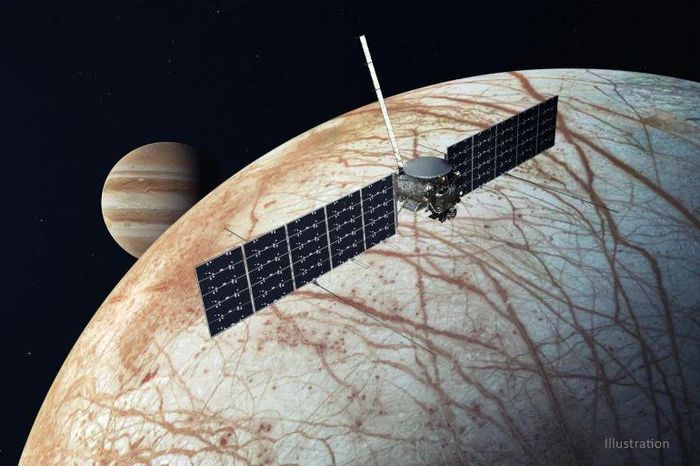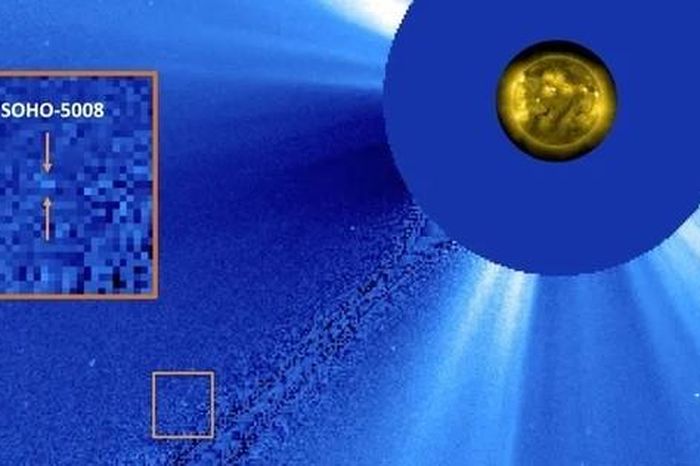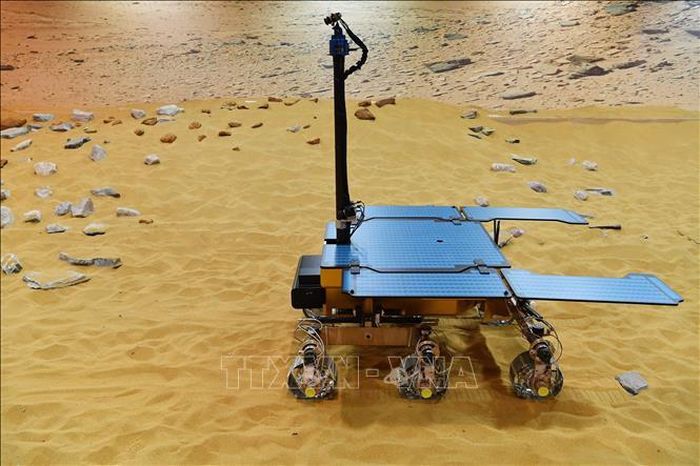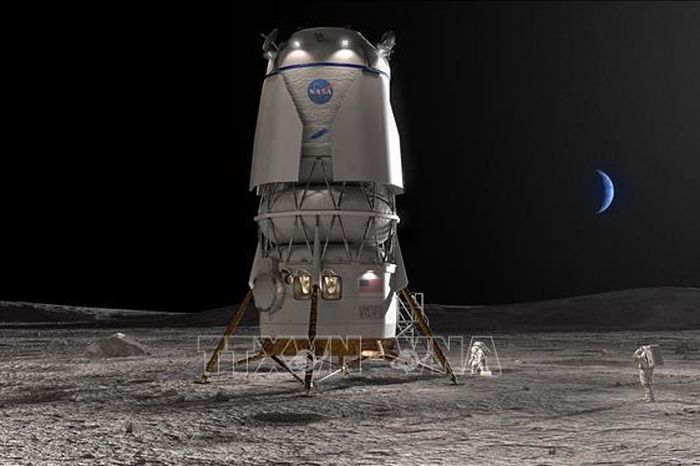Did NASA ships indirectly bombard other planets?
A new analysis has revealed that some rocks from the asteroid Dimorphos that NASA's DART spacecraft crashed into in 2022 may be on a collision course with our neighboring planet Mars, according to Science Alert.

DART was the spacecraft used in the Twin Asteroid Redirection Test (DART), in which the smaller of the Didymos - Dimorphos near-Earth pair was slammed into by DART.
This is a test with a hypothetical scenario that Dimorphos is capable of impacting Earth, in preparation for real threats in the future.
Since then, NASA and partner space agencies have always monitored this impact.
The research team led by astronomer Marco Fenucci from the European Space Agency (ESA) and Albino Carbognani from the Italian National Institute of Astrophysics pointed out the possibility of Mars "taking a hit" in a recently published report. Published in the scientific journal Monthly Notices of the Royal Astronomical Society.
Their investigation focused on numerical simulations of the impact, revealing impacts from now up to 20,000 years from now, with a particular focus on 37 rocks identified by the Hubble Space Telescope, Measures from 4-7 m.
You will feel relieved to know that the Earth is fine. Some rocks come close, but close enough to pose a threat.
But four of the rocks will come close enough to Mars to crash straight into the surface – two within 6,000 years from now and two in 15,000 years.
If those small rocks crashed into Earth, they would quickly be burned up by the atmosphere and could disappear long before reaching the surface. But Mars is not protected by as good an atmospheric cushion as Earth.
According to calculations, they can create small craters with a diameter of up to 300 m on our neighboring planet.
That doesn't seem like a big deal at the moment, because there's no one on Mars right now.
But if space agencies launch missions targeting Mars in the future, they will need to consider the risk to spacecraft at the moment these rocks intersect the orbit of Mars.
You should read it
- Here's your chance to design a NASA payload for a Roomba-sized moon rover
- NASA opens the entire library of photos, videos and audio for free, anyone can see
- NASA will prioritize the recruitment of experienced scientists in blockchain and cryptocurrency
- NASA's top secret inventions have just been revealed
- NASA launches new Sun tracking tool
- Why didn't NASA intend to return to the Moon?
- How to watch NASA and Russia launch a new crew to the ISS on Thursday
- Leaving the solar system, the NASA ship sent back a confusing message
May be interested
- NASA has just discovered an asteroid with an extremely 'weird' shape
 asteroids are rocky, airless bodies that orbit the sun. asteroids are smaller than planets but larger than meteorites and are not comets.
asteroids are rocky, airless bodies that orbit the sun. asteroids are smaller than planets but larger than meteorites and are not comets. - NASA revealed the first studies of the planet's outer atmosphere
 nasa revealed the first studies of the atmosphere of seven earth-like planets, the area where life exists. invite you to consult!
nasa revealed the first studies of the atmosphere of seven earth-like planets, the area where life exists. invite you to consult! - Maybe the Solar System 2.0 is not the 'cradle of nurturing life' as NASA hopes
 scientists have just published evidence that could suppress hope that life can be formed and nurtured in the solar system 2.0.
scientists have just published evidence that could suppress hope that life can be formed and nurtured in the solar system 2.0. - Explore the universe through 5 NASA websites
 as a pioneer in space exploration, nasa has a unique view of the world. we often learn from them more or less.
as a pioneer in space exploration, nasa has a unique view of the world. we often learn from them more or less. - Hundreds of bottles found in the mysterious shipwreck
 hundreds of bottles are found in the body of a mysterious shipwreck hundreds of years old promising to provide new clues to the origin of this ship.
hundreds of bottles are found in the body of a mysterious shipwreck hundreds of years old promising to provide new clues to the origin of this ship. - Interesting discovery of strange planets outside the solar system
 so far, humans have discovered more than 400 extrasolar planets (exoplanets) in the universe. here are interesting facts about the most beautiful exoplanets that humans have ever known.
so far, humans have discovered more than 400 extrasolar planets (exoplanets) in the universe. here are interesting facts about the most beautiful exoplanets that humans have ever known. - How to Track Ships
 there are 2 main ways you can track a ship. most ships have an automatic identification system, or ais, which transmits the ship's position and heading information. you can use this information to monitor vessels in waters across the...
there are 2 main ways you can track a ship. most ships have an automatic identification system, or ais, which transmits the ship's position and heading information. you can use this information to monitor vessels in waters across the... - How many planets are there in the universe?
 according to estimates by astronomers based on the assumption that each star has a planet orbiting, the universe has about 100,000 billion billion planets.
according to estimates by astronomers based on the assumption that each star has a planet orbiting, the universe has about 100,000 billion billion planets. - The rotary 'elevator' has 1-0-2 in the world for ships
 the huge elevator, which has the role of lifting and lowering ships by the unique spinning method in scotland, called falkirk wheel, was inaugurated in 2002.
the huge elevator, which has the role of lifting and lowering ships by the unique spinning method in scotland, called falkirk wheel, was inaugurated in 2002. - Three potential landing locations are listed in the Martian Mission in 2020
 nasa has just announced to international scientists a list of their next 3 potential landing sites by 2020 right on red planet, mars.
nasa has just announced to international scientists a list of their next 3 potential landing sites by 2020 right on red planet, mars.










 NASA announced its plan to search for extraterrestrial life
NASA announced its plan to search for extraterrestrial life Leaving the solar system, the NASA ship sent back a confusing message
Leaving the solar system, the NASA ship sent back a confusing message Detection of a rare comet appearing during a total solar eclipse
Detection of a rare comet appearing during a total solar eclipse The Rosalind probe will be launched to Mars in 2028
The Rosalind probe will be launched to Mars in 2028 The US reaffirmed its intention to send the first Japanese astronaut to the Moon
The US reaffirmed its intention to send the first Japanese astronaut to the Moon Total solar eclipse in North America 'most impressive in hundreds of years'
Total solar eclipse in North America 'most impressive in hundreds of years'